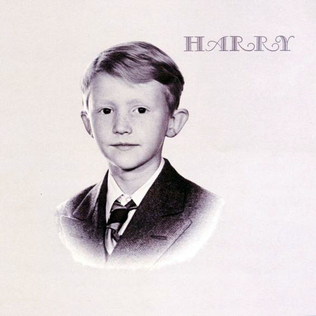 By the end of the decade Nilsson was starting to become equally known for singing as well as songwriting, certainly in the Hollywood industries. He was busy in the first part of 1969 working on the soundtrack for the over-the-top Otto Preminger film Skidoo, which featured two songs related to the “plot”, and “The Cast And Crew”, which literally read the film credits over musical backing. His next proper album played with his mystique with the simple title Harry, the boyhood photo on the front, liner notes by Apple publicist Derek Taylor’s daughter on the back, and sepia-toned snaps in the gatefold.
By the end of the decade Nilsson was starting to become equally known for singing as well as songwriting, certainly in the Hollywood industries. He was busy in the first part of 1969 working on the soundtrack for the over-the-top Otto Preminger film Skidoo, which featured two songs related to the “plot”, and “The Cast And Crew”, which literally read the film credits over musical backing. His next proper album played with his mystique with the simple title Harry, the boyhood photo on the front, liner notes by Apple publicist Derek Taylor’s daughter on the back, and sepia-toned snaps in the gatefold.Opening with his own version of “The Puppy Song”, written originally for Mary Hopkin’s first album, he’s right back to the “vo-de-oh-doe” approach that filled up his first two RCA albums. “Nobody Cares About The Railroads Anymore” is another slice of nostalgia, but “Open Your Window” is a not-too-lush ballad that’s more restrained and therefore more successful. The Beatle fixation continues on a faithful cover of “Mother Nature’s Son”, with strings replacing the brass on the original. “Fairfax Rag” and “City Life” were both written by fellow Monkees songwriter Bill Martin; the former is forced ragtime, while the latter actually sounds contemporary, and is preferred.
“Mournin’ Glory Story” is also firmly in the present, a brief but heartbreaking portrait of what we used to call a bag lady, as is the romance glimpsed in “Maybe”, but then he adds a patriotic tune his mother wrote after World War II. “I Guess The Lord Must Be In New York City” was written but rejected for Midnight Cowboy in favor of “Everybody’s Talkin’”, the arrangement of which it almost pointedly resembles. “Rainmaker” was written with the aforementioned Bill Martin, and sounds like it could belong to a larger conceptual piece. He was smart enough to record Jerry Jeff Walker’s “Mr. Bojangles” a full year before the Nitty Gritty Dirt Band, while Randy Newman’s “Simon Smith And The Amazing Dancing Bear” provides a preview of Nilsson’s next album.
With Harry, he finally, tentatively, breaks away from the overused stylistic gimmick of his earlier work and begins to approach his true potential. For that, it is recommended.
Nilsson Harry (1969)—3
1997 DCC reissue: same as 1969, plus 3 extra tracks
No comments:
Post a Comment